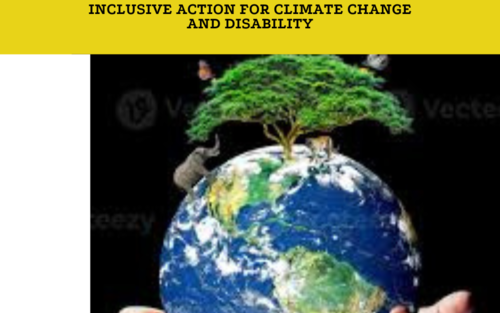Climate Change and Disability Inclusion: A Call for Inclusive Action
Climate change is a pressing global issue that impacts everyone, but its effects are particularly severe for individuals with disabilities. As the frequency and intensity of climate-related disasters increase, people with disabilities often face disproportionate risks and barriers. These barriers can range from physical inaccessibility to information and services, to social and economic vulnerabilities.

Inclusion Action For Climate Change and Disability. (Light for the world)
Unique Challenges
-
1
Accessibility
During emergencies like floods, hurricanes, and wildfires, evacuation routes and shelters are often not accessible to individuals with mobility impairments. This lack of accessibility can lead to life-threatening situations.
-
2
Communication Barriers:
Critical information about disasters, such as warnings and evacuation orders, may not be disseminated in accessible formats. People with hearing or visual impairments may miss vital information, putting them at greater risk.
-
3
Health Vulnerabilities
Many individuals with disabilities have underlying health conditions that can be exacerbated by climate change. For example, extreme heat can affect those with respiratory issues, and natural disasters can disrupt access to essential medications and healthcare services.
-
4
Economic and Social Factors:
People with disabilities are often among the poorest in society and may lack the resources to adapt to or recover from climate impacts. Social
isolation and stigma can further hinder their ability to seek help and support during emergencies.
The Need for Inclusive Policies
To address these challenges, it is crucial to integrate disability inclusion into climate change
policies and practices. Here are some key actions:
-
1
Inclusive Planning:
Ensure that disaster preparedness and response plans include the needs of people with disabilities. This involves consulting with disability advocacy groups and incorporating their input into policy development.
-
2
Accessible Communication:
Provide information in multiple formats, including sign language, braille, and easy-to-read materials, to ensure everyone has access to critical information.
-
3
Infrastructure and Services:
Design evacuation routes, shelters, and emergency services to be accessible to all individuals, regardless of their physical abilities.
-
4
Capacity Building:
Train emergency responders and community leaders on disability inclusion to ensure they are equipped to support people with disabilities during crises.
-
5
5. Economic Support:
Implement programs that provide financial assistance and resources to help people with disabilities recover and adapt to climate impacts.
A Call to Action
Addressing climate change and disability inclusion requires a collaborative effort from governments, NGOs,[Non Government Organisations] and communities. By recognizing the unique vulnerabilities of people with disabilities and taking proactive steps to ensure their inclusion, we can build more resilient and equitable societies.
Together, we can create a future where everyone, regardless of their abilities, is protected and empowered to thrive in the face of climate change.
